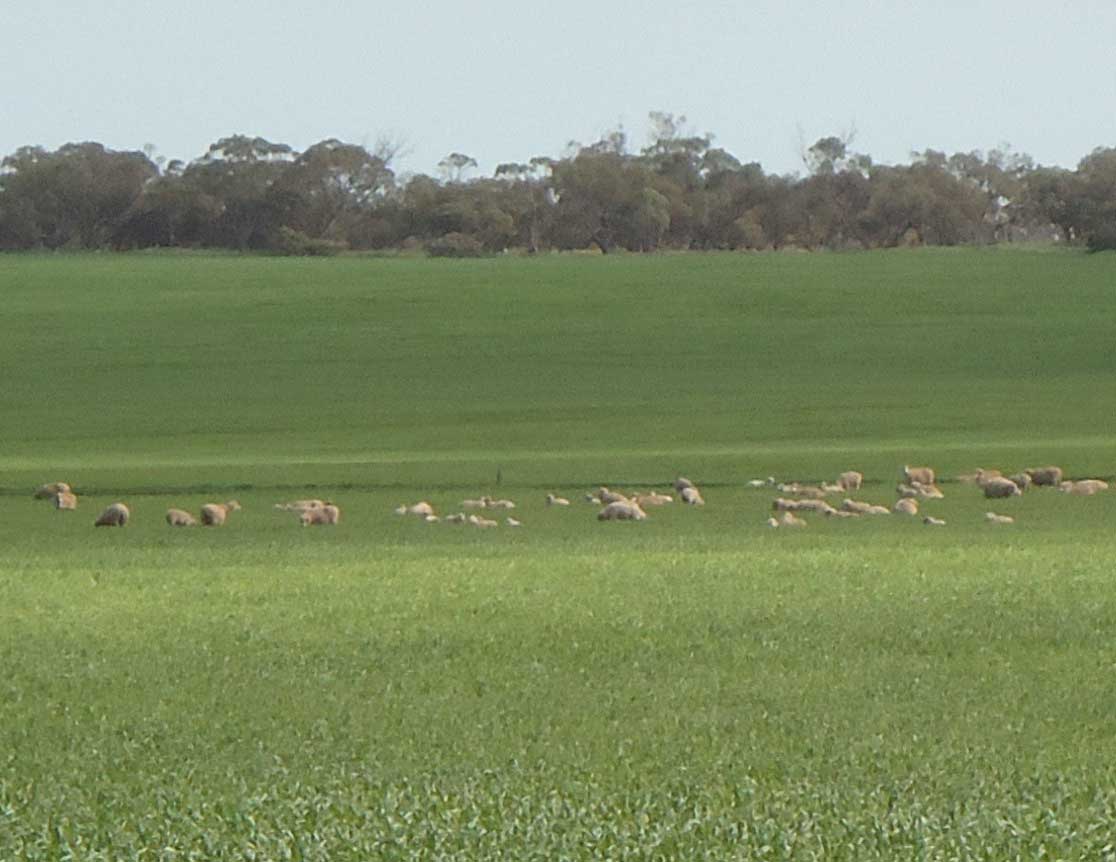Whilst the returns for sheep are good, there are increasing costs particular associated with the poor season in 2017 in some areas, and the extra need for supplementary feed. To minimise costs and ensure that sheep have sufficient feed it will be essential to maximise early pasture growth and production.
Self-regenerating pastures can produce good bulk, if pasture density is high. However with increased cropping intensity and poor springs in recent years,
pasture seed reserves in many areas are relatively low. Therefore to ensure good early growth, pastures will need to be sown to ensure good plant density.

For a single year pasture a mixture of cereal and legume (usually vetch), is a good option. The cereal will provide good early feed, while the vetch will recover from early grazing and provide greater bulk in late winter and spring.
To maximise pasture production and reduce the impact on the cropping enterprises:
- Sow early (mid to late April), even before the opening rains to ensure the seed germinates and establishes quickly before the soil gets cold and to ensure the sowing does not interfere with the normal cropping program.
- Dry sowing of pasture feed paddocks can be used to test seeding equipment and train operators.
- Cereals provide the quickest early feed, so use what you may have in the silo. Barley is generally quicker to bulk up than wheat.
- Use high seeding rates – i.e. 40-50% more than normal grain rates if sowing cereal alone. Narrower row spacing can also be beneficial.
- Adding a legume won’t necessarily provide early feed but will bulk up in late winter/spring. A cereal/legume mix will limit the pre-emergent herbicide options, which may allow some annual grasses to establish. These can be removed in late winter with a grass selective herbicide, once the cereal has been grazed out.
- Inoculate legume seed with the correct rhizobial strain if it has not been grown in the area for a number of years. Dry sowing into acid soils or dry sowing combined with other seed treatments can significantly reduce rhizobial survival, resulting in nodulation failure.
- The use of granular and liquid inoculants enable rhizobia to be separated from toxic chemicals such as seed treatments but these tend to have lower rhizobia numbers than peat slurry inoculants.
- Protect early-sown crops from establishment pests and aphids. Insecticide seed dressings are effective but follow-up aphid sprays in warm autumns may be required if aphids persist.
- Use sufficient fertiliser, particularly nitrogen (15 to 30 kg N/ha) for good early growth. Applying additional nitrogen can be beneficial in lower fertility soils but higher seeding rates will give greater early production on soils with moderate to good fertility.
- Start grazing early – as soon as plants are anchored, and secondary roots have developed.
- Graze at the 3-4 leaf stage and keep in mind that the growth rate may be about 20kg DM/ha/day. That equates to a stocking rate of about 20 DSE/ha and will be more once the plants get away.
- Consider using electric fencing to divide up large paddocks. If the cereals are under-grazed, some varieties will run up to head early and not produce maximum dry matter production. If splitting paddocks, graze one side for a week then rotate with the other side to maximise production of feed efficiency.
- Be aware of Maximum Residue Limits (MRL’s) and Export Slaughter Interval (ESI) if using chemicals.
Early / dry sowing of pastures will provide the best opportunity for rapid early growth of pasture, while ensure sowing does not interfere with normal
cropping operations.
Don’t forget that you can graze your wheat and barley (for grain) crops early (as long as the plants can’t be pulled out by the grazing sheep) without
losing grain yield. Graze for a couple of days and rotate with other paddocks if available.
For further information contact your local Livestock Consultant or Agronomist.
Michael Wurst, Senior Consultant, PIRSA Rural Solutions





